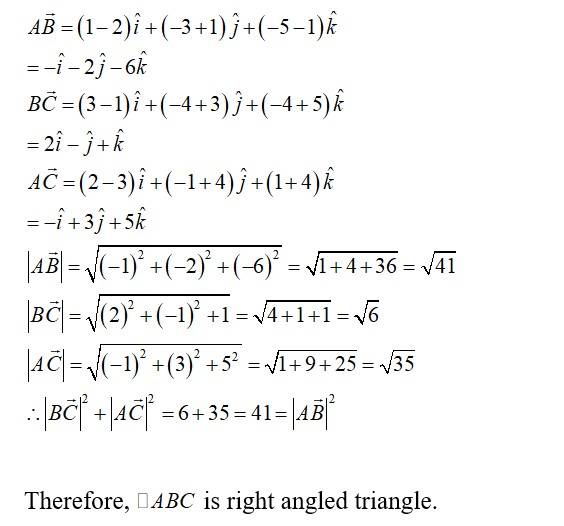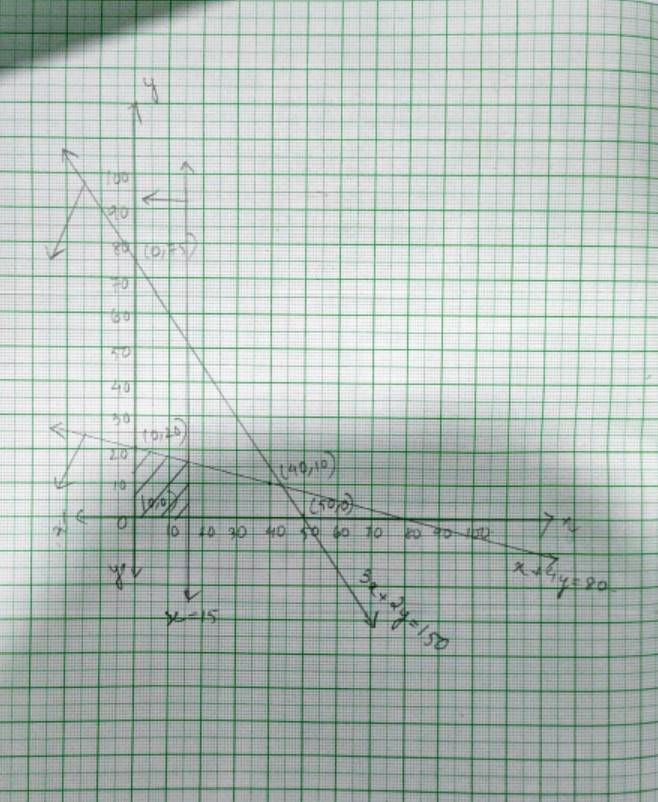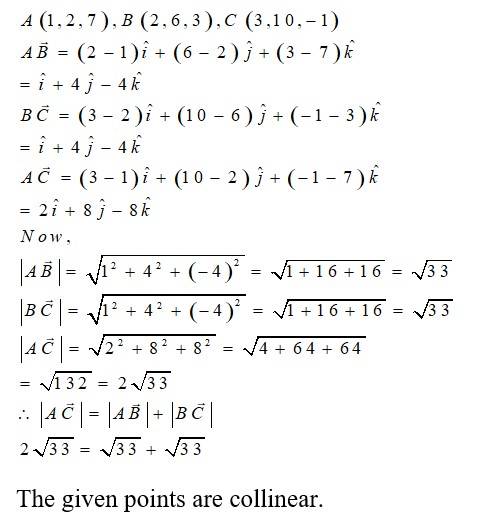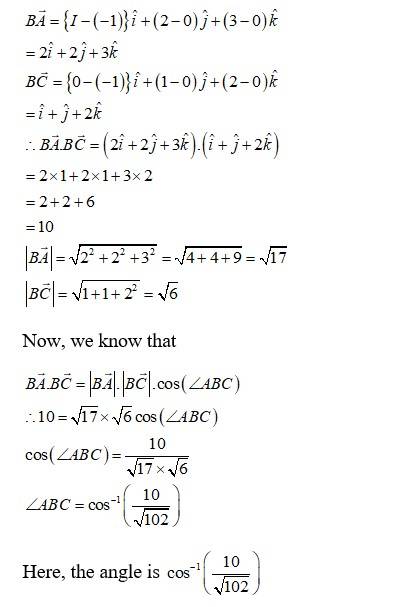Maths
Get insights from 6.5k questions on Maths, answered by students, alumni, and experts. You may also ask and answer any question you like about Maths
Follow Ask QuestionQuestions
Discussions
Active Users
Followers
New answer posted
6 months agoContributor-Level 10
Vector is a unit vector if
Now,
Therefore, vectar is a unit vector if a= .
Option (D)is correct.
New answer posted
6 months agoContributor-Level 10
Let vector and be position vector of point A, B, C respectively.
So,
Now, vectors and represents the sides of .
Hence,

New answer posted
6 months agoContributor-Level 10
51. The given system of inequality is
x+2y≤ 10- (1)
x+y≥ 1 - (2)
x – y ≤ 0 - (3)
x≥ 0 and y≥ 0 - (4)
The corresponding equation of (1), (2) and (3) are
x + 2y = 10
x | 0 | 10 |
y | 5 | 0 |
and x + y =1
x | 0 | 1 |
y | 1 | 0 |
and x – y = 0
x | 0 | 1 |
y | 0 | 1 |
Putting (2,0)= (x, y) in inequality (1), (2) and (3),
2+2 * 0 ≤ 10 => 2≤ 10 is true.
and 2+0 ≥ 1 => 2 ≥ 1 is true.
and 2 – 0 ≤ 0 => 2 ≤ 0 is false.
So, the solution of inequality (1) and (2) is the plane that includes point (2,0) whereas the solution of inequality (3) is the plane which includes point (2, 0)
∴ The shaded region represents the solution of the given system of inequality.

New answer posted
6 months agoNew answer posted
6 months agoContributor-Level 10
Consider
and
Then,

Therefore, the converse of the given statement need not be true.
New question posted
6 months agoNew answer posted
6 months agoContributor-Level 10
50.The given system of inequality is
3x+2y≤ 150- (1)
x+4y≤ 80- (2)
x≤ 15 - (3)
y≥ 0 and x≥ 0 - (4)
The corresponding equation of (1) and (2) are
3x + 2y = 150
x | 50 | 0 |
y | 0 | 75 |
and x + 4y =80
x | 0 | 40 |
y | 20 | 10 |
Putting (0,0)= (x, y) in inequality (1) and (2) we get,
3 * 0+2 * 0 ≤ 150 => 0 ≤ 150 is true.
and 0+4 * 0 ≤ 80 => 0 ≤ 80 is true.
So, the solution plane of both inequality (1) and (2) includes the origin (0,0).
∴ The shaded region is the solution of the given system of inequality.

New answer posted
6 months agoContributor-Level 10
2. Given, f (x) = 2x2 1
At x = 3
Lim f (x) = 2 (3)2 1 = 18 1 = 17.
So, f is continuous at x = 3.
Taking an Exam? Selecting a College?
Get authentic answers from experts, students and alumni that you won't find anywhere else
Sign Up on ShikshaOn Shiksha, get access to
- 65k Colleges
- 1.2k Exams
- 679k Reviews
- 1800k Answers


